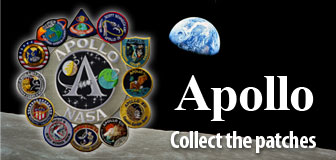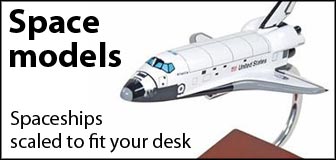Astronauts see Cygnus re-entry over the South Pacific
BY STEPHEN CLARK
SPACEFLIGHT NOW
Posted: August 18, 2014

Packed with trash and other equipment tagged for disposal, an Orbital Sciences Corp. Cygnus spacecraft plunged back into the atmosphere Sunday over the uninhabited Pacific Ocean, concluding a one-month mission to resupply the International Space Station.
The re-entry occurred east of New Zealand at approximately 9:15 a.m. EDT (1315 GMT) Sunday, two days after the Cygnus spacecraft was released from the space station's robotic arm.
The automated cargo ship launched July 13 on an Antares rocket from Virginia's Eastern Shore, beginning a three-day transit to the space station. It delivered nearly 3,300 pounds of experiments, supplies and provisions for the space station and its six-person crew.
The astronauts packed Cygnus with 3,550 pounds of items for disposal.
The mission, known as Orb-2, was the second of eight operational resupply missions by Orbital Sciences under a $1.9 billion contract with NASA. It was the third visit to the space station by Orbital's Cygnus spacecraft, including a demonstration flight in September 2013.
"Orbital's third cargo delivery mission to the International Space Station concluded with the controlled reentry of Cygnus over the unpopulated expanses of the Pacific Ocean," said Frank Culbertson, executive vice president and general manager of Orbital's advanced programs group.
"From start to finish, we are very pleased with the results of this mission. Our team is proud to be providing essential supplies to the ISS crew so they can carry out their vital work in space. With three fully successful cargo delivery missions now complete, it is clear our public-private partnership with NASA is proving to be a positive asset to the productivity of the ISS. We are looking forward to the next Antares launch and the Cygnus cargo delivery mission that is coming up in about two months," Culbertson said in a statement.
The Orb-3 resupply mission is scheduled for launch from Wallops Island, Va., in mid-October.
Sunday's destructive dive back into Earth's atmosphere was timed to be visible from the space station, where astronauts and cosmonauts observed the Cygnus re-entry.
The crew's observations of Sunday's Cygnus re-entry was an exercise to prepare for the demise of Europe's Automated Transfer Vehicle early next year.
Officials are considering putting the ATV, which is larger than the Cygnus spacecraft, on a trajectory for a "shallow" re-entry when it plunges back to into the atmosphere at the end of its mission.
Instead of lowering the craft's orbit to intersect the Earth's surface, controllers would put the low point of the ATV's orbit in the upper atmosphere, making for a slower warm-up and disintegration of the spacecraft. The shallow re-entry would also spread debris along a longer footprint.
The experiment would help NASA and its partners prepare for the disposal of the International Space Station at the end of its mission. A controlled re-entry of such a large vehicle -- roughly the size of a football field and weighing nearly a million pounds -- has never been attempted before.
Images of the Cygnus debris trail are posted below.
See our Mission Status Center for the latest news on the mission.
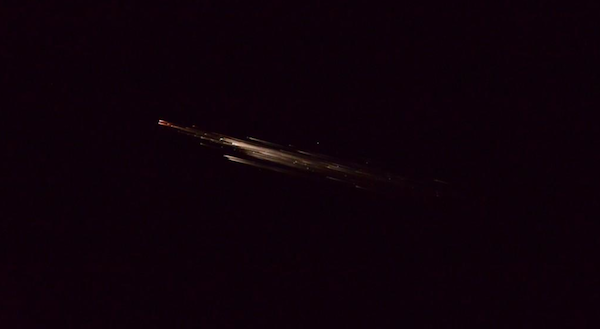 Photo credit: Maxim Suraev
Photo credit: Maxim Suraev
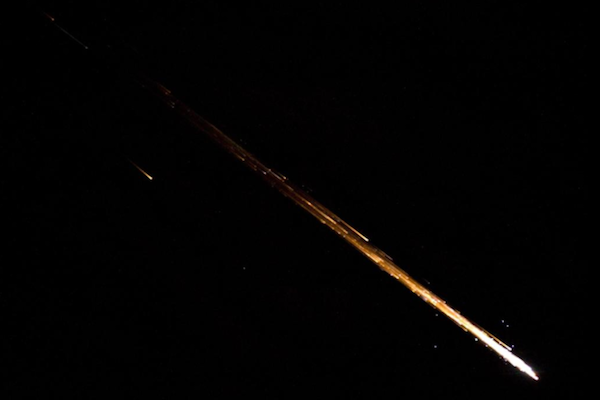 Photo credit: Alexander Gerst
Photo credit: Alexander Gerst
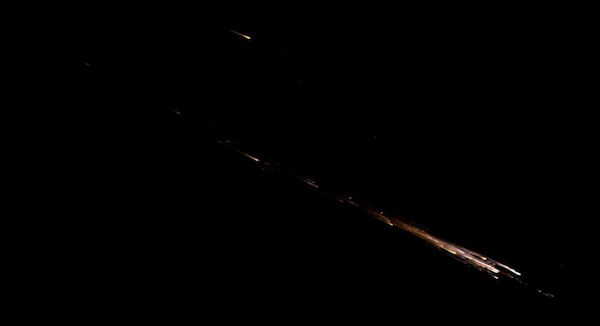 Photo credit: Alexander Gerst
Photo credit: Alexander Gerst
|
|
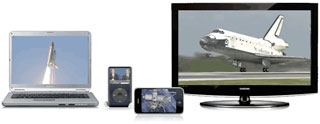

 Photo credit:
Photo credit:  Photo credit:
Photo credit:  Photo credit:
Photo credit: 